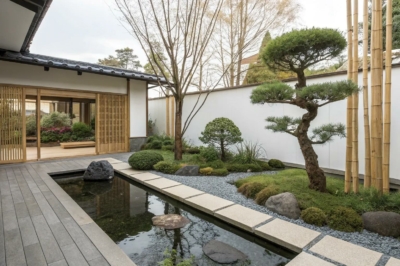1. Embrace Zen Aesthetics with Gravel
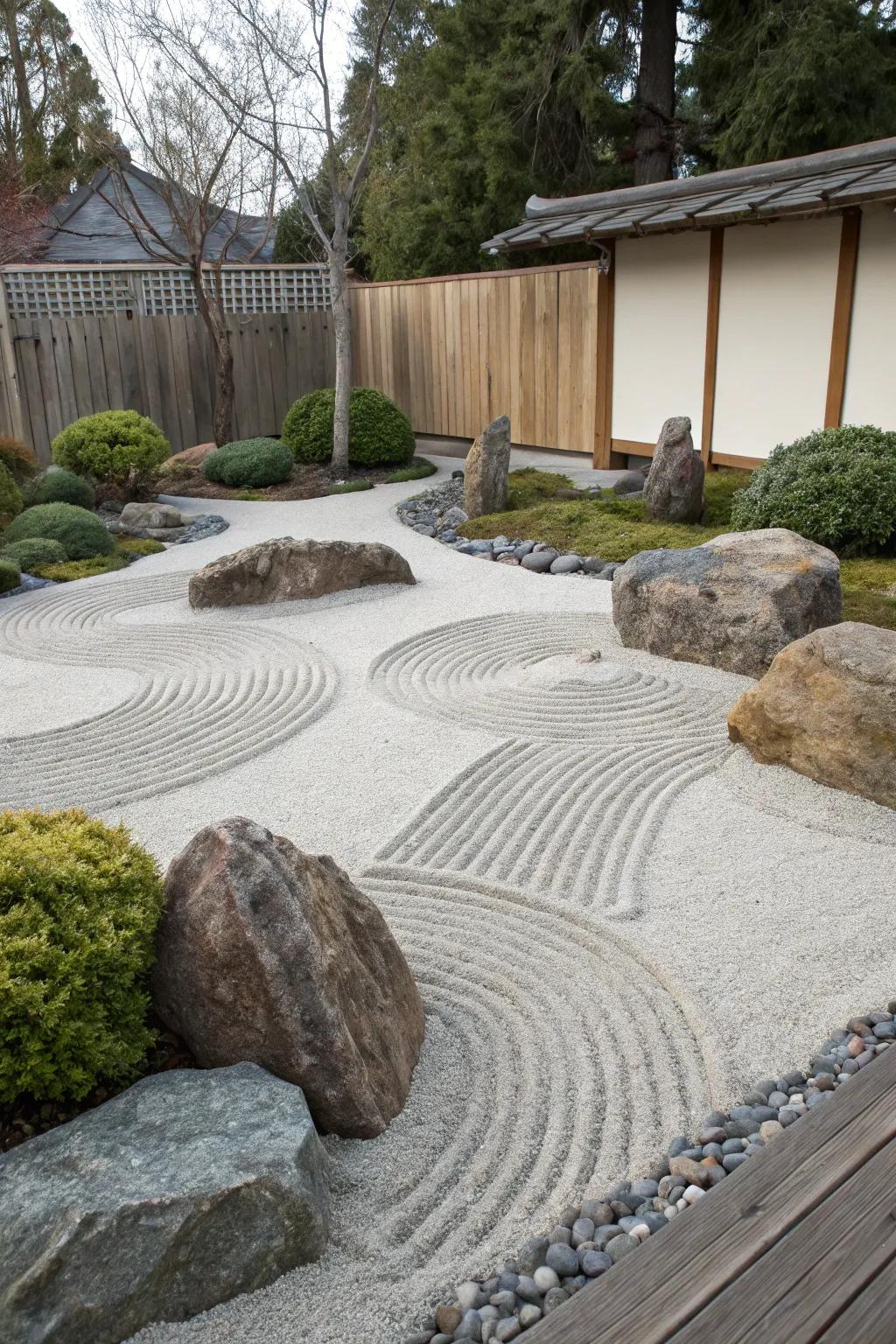
Create Zen-inspired areas with carefully raked gravel or sand to symbolize flowing water. I love how this simple element adds depth and tranquility to the space.
Give these a look:
- Japanese Zen Garden Rake Set: Enhance your garden’s tranquility by creating intricate patterns with this Zen garden rake set.
- Decorative White Gravel for Gardens: Transform your space with serene elegance using this decorative white gravel for a calming effect.
- Miniature Zen Stone Lantern: Add a touch of authenticity to your garden with this charming miniature Zen stone lantern.
2. Use Minimalist Planting for Impact
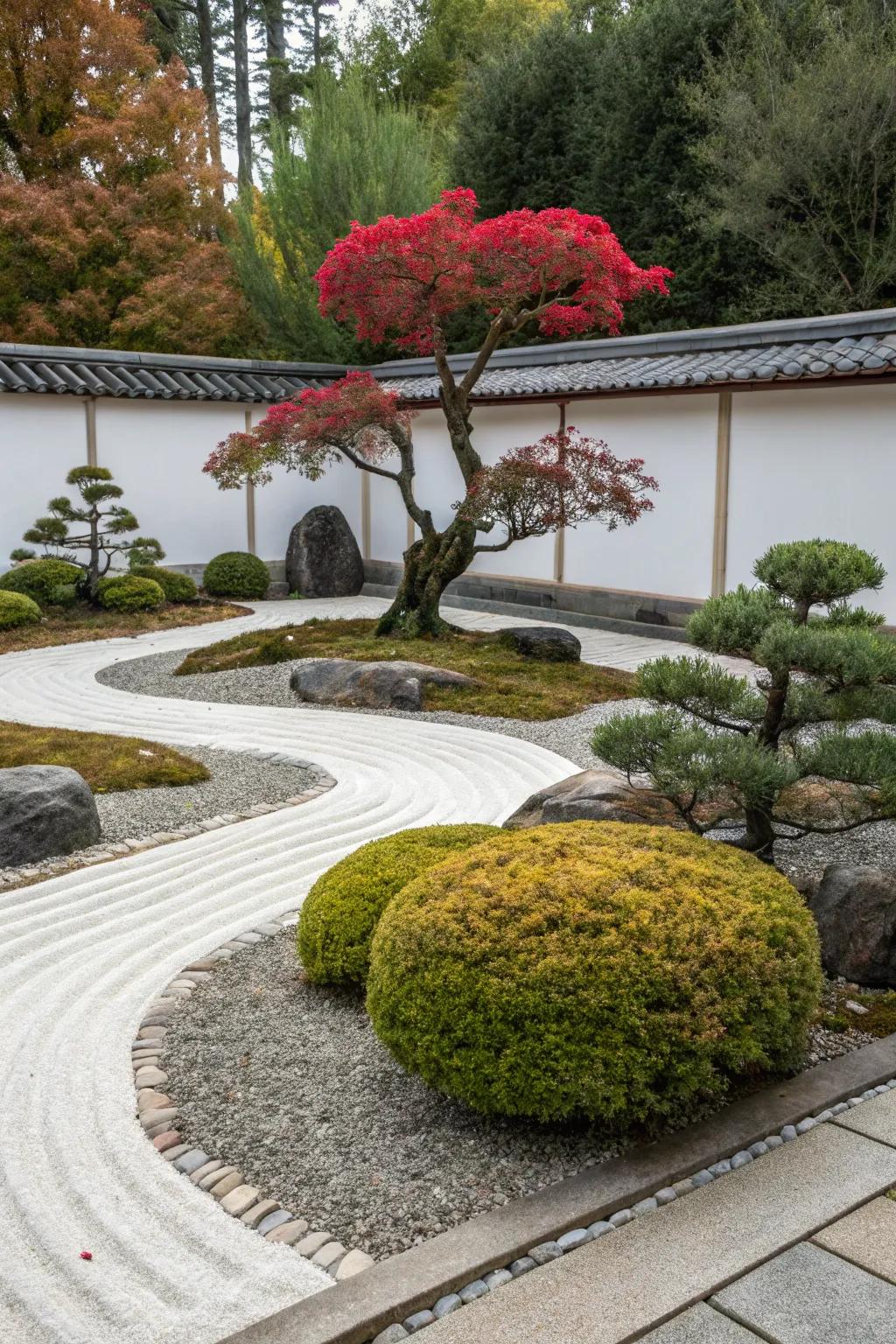
Select plants with striking forms and minimal upkeep needs. In my experience, a few well-chosen plants can make a powerful statement without overwhelming the space.
Try these:
- Dwarf Japanese Maple Tree: Add elegance with a Japanese Maple, perfect for striking form and minimal upkeep needs.
- Bonsai Starter Kit: Create a serene atmosphere with a Bonsai, combining beauty and easy care for your garden.
- Evergreen Topiary Bush: Enhance your garden with topiary bushes, offering structure and low maintenance simplicity.
3. Incorporate Modern Architectural Elements
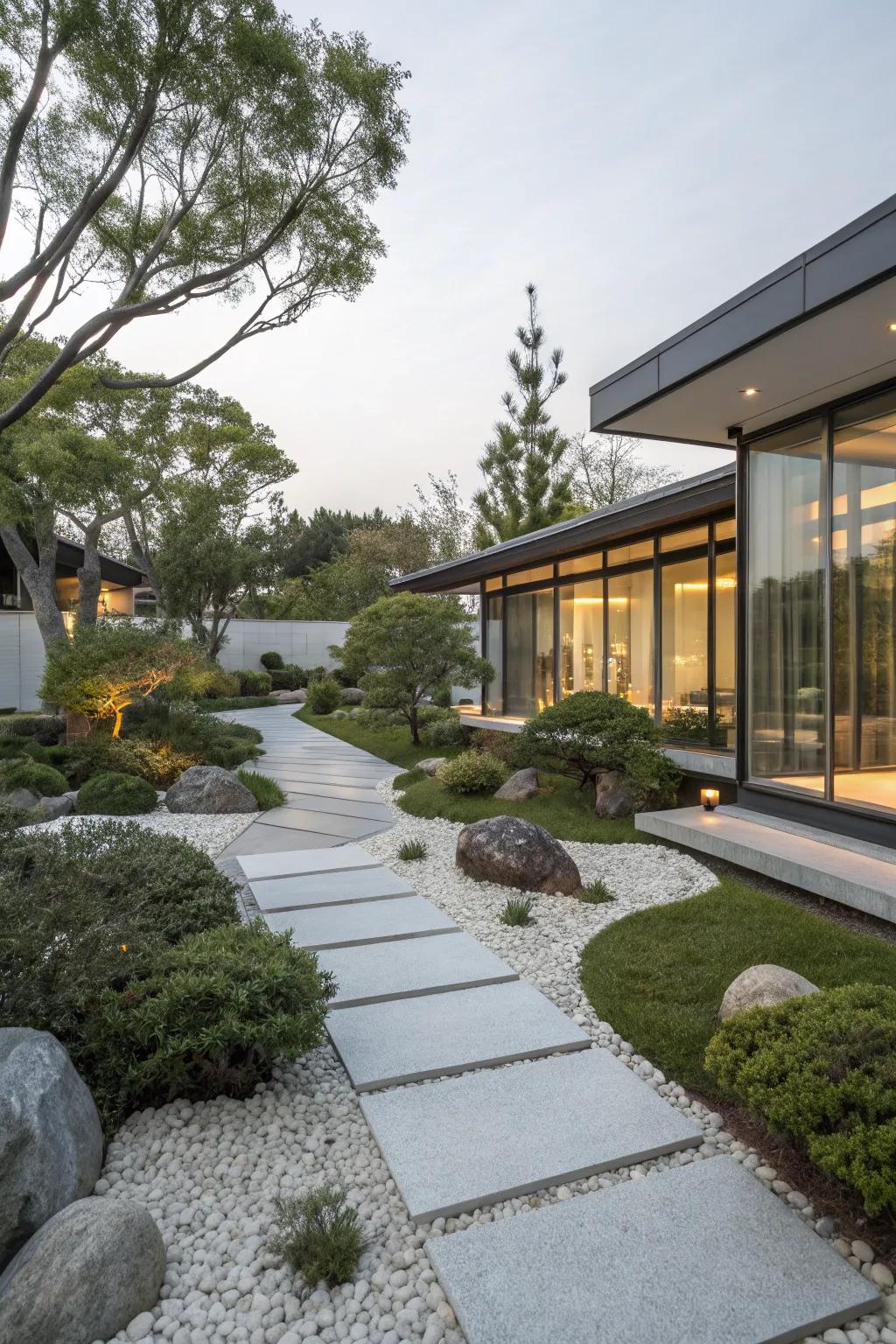
Blend modern architecture with traditional garden design for a seamless transition. My garden bridges the gap between indoor and outdoor living with sleek lines and natural materials.
Some handy options:
- Outdoor Solar Pathway Lights: Illuminate your garden path elegantly with energy-efficient, sleek solar lights for a modern touch.
- Minimalist Garden Bench: Add a contemporary seating area with a minimalist bench made of durable natural materials.
- Architectural Water Feature: Enhance tranquility in your garden with a stylish, modern water feature for visual appeal.
4. Incorporate Tranquil Lighting
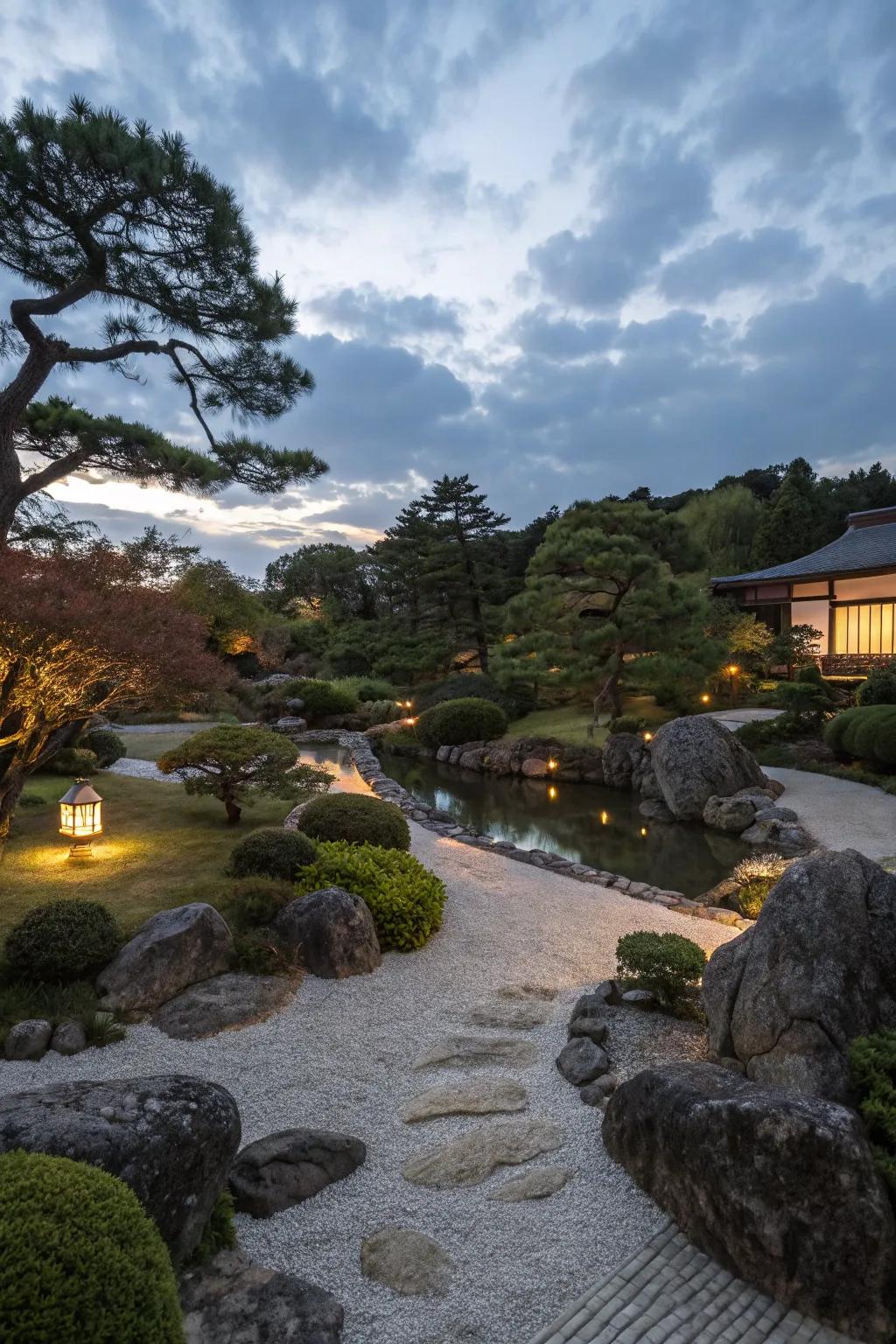
Use soft lighting to illuminate the garden in the evening. I love how warm uplighting highlights foliage and creates an inviting atmosphere.
A few choices to try:
- Warm LED Garden Path Lights: Illuminate your garden path with soft, inviting LED lights to enhance evening ambiance beautifully.
- Solar-Powered Lanterns: Add charm and sustainability with solar lanterns that softly glow and highlight your garden’s beauty.
- Japanese Stone Lantern Lights: Create an authentic look with stone lantern lights that cast a serene, warm glow after dusk.
5. Feature Compact Trees for Structure
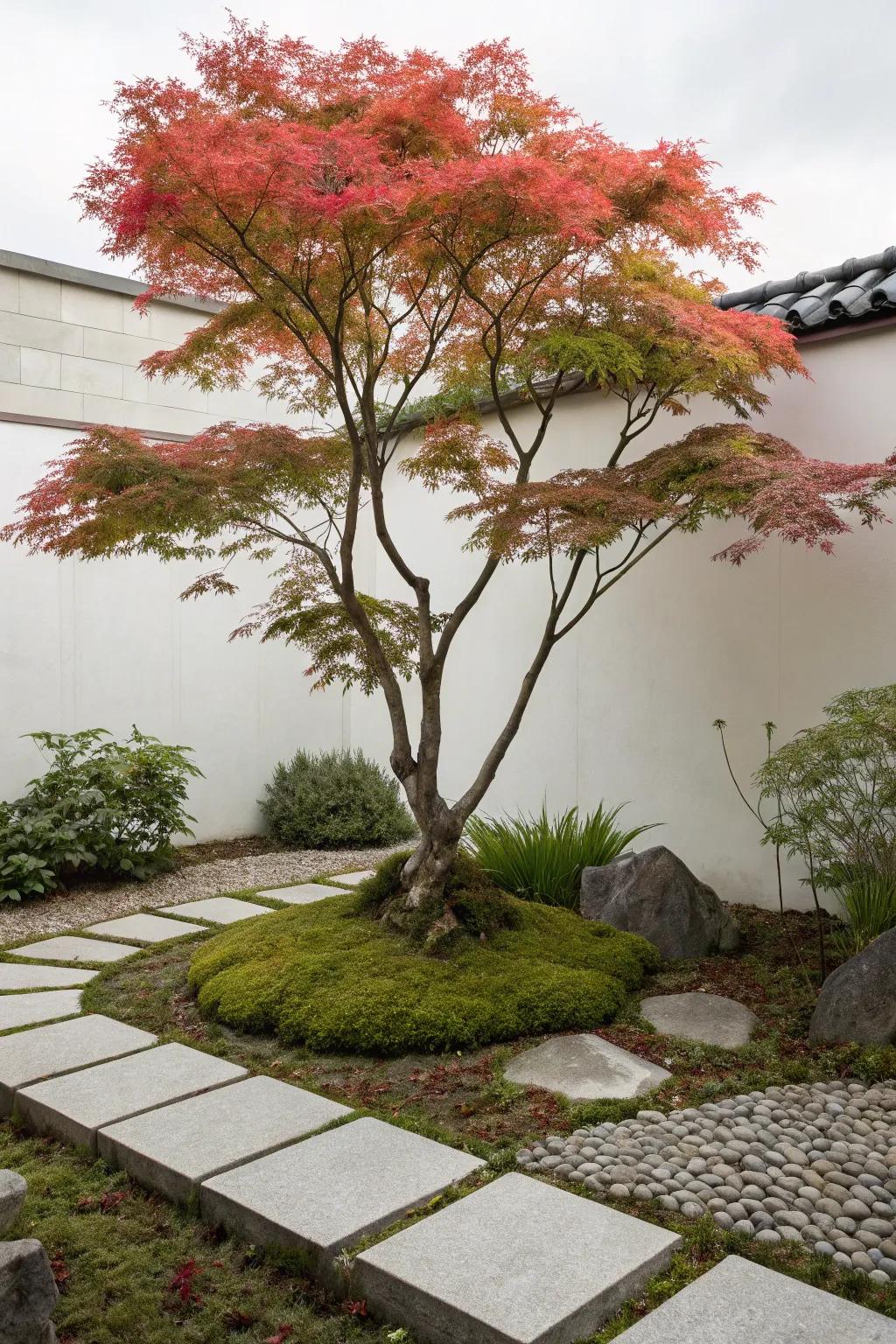
Compact trees like Japanese maples provide structure without overwhelming small spaces. Their delicate leaves add a touch of elegance.
Consider these options:
- Japanese Maple Tree Seeds: Plant Japanese maple seeds to add elegant structure to your serene garden space.
- Decorative Garden Pebbles: Enhance garden pathways with decorative pebbles, complementing the elegance of compact trees.
- Moss Ground Cover Mix: Add lush, green ground cover with moss for a tranquil, natural garden setting.
6. Design Enclosed Spaces for Privacy
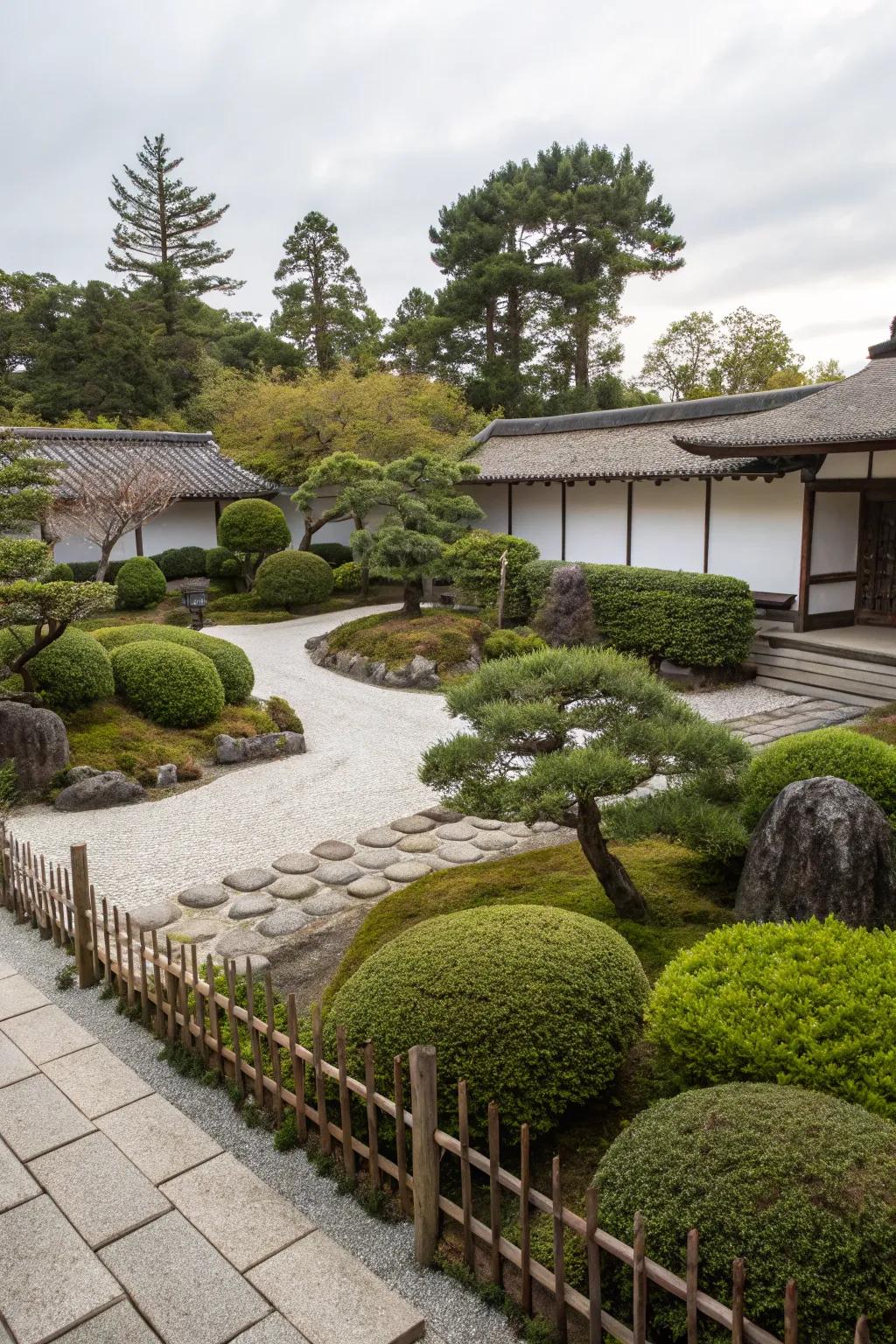
Use plants and structures to create enclosed spaces that offer intimacy and tranquility. Personally, these spaces feel like a personal retreat from the world.
A few helpful options:
- Bamboo Privacy Screen: Enhance your garden’s privacy with a bamboo screen, creating a serene and natural retreat.
- Garden Stone Pathway Kit: Create a tranquil and inviting path with this stone pathway kit, guiding you to your retreat.
- Japanese Garden Lantern: Illuminate your garden with a traditional lantern, adding a peaceful ambiance to your enclosed space.
7. Choose Bamboo for Vertical Interest
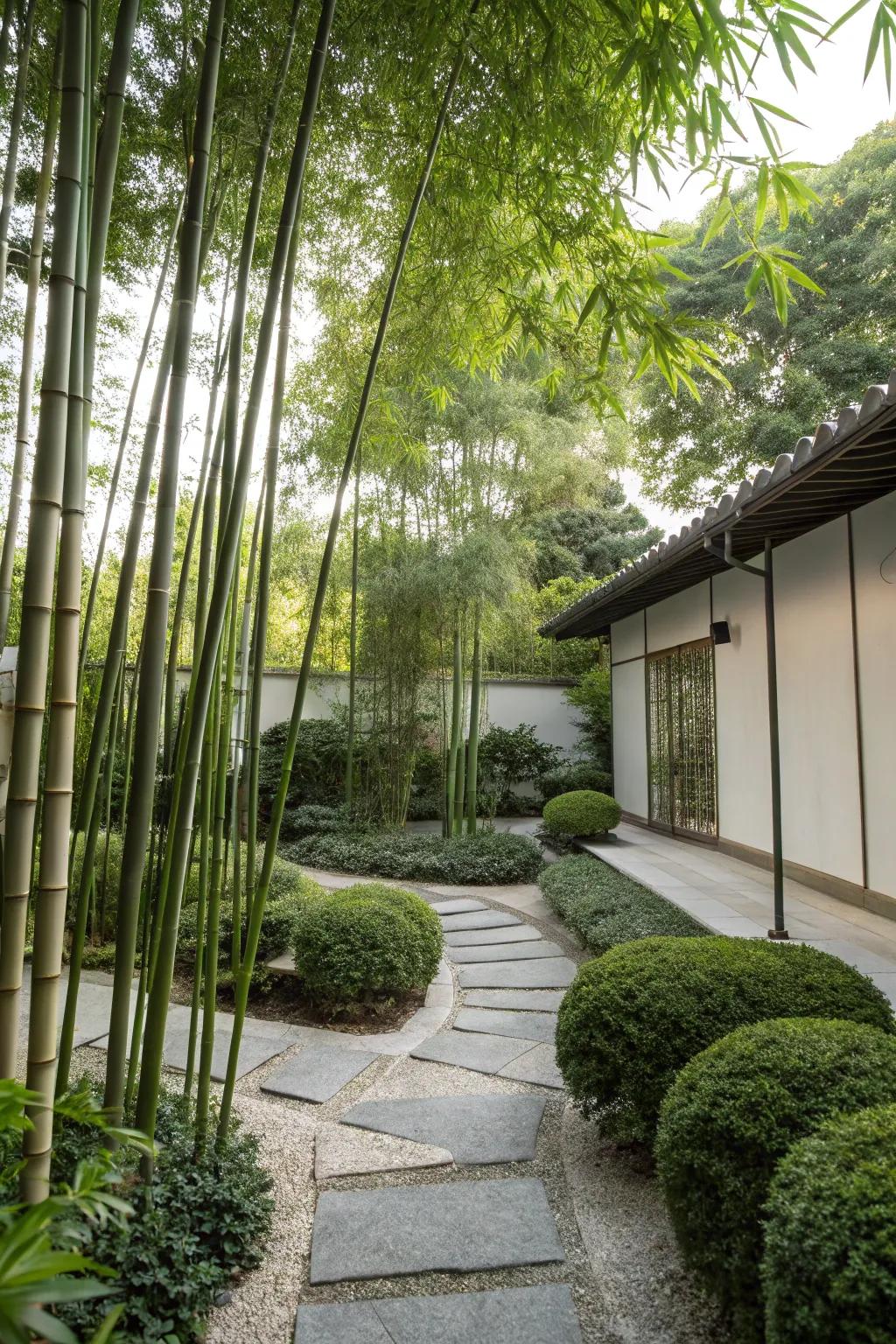
Bamboo provides vertical interest and a sense of privacy. In my garden, bamboo screens create secluded corners perfect for meditation.
Products that could assist:
- Bamboo Privacy Screen: Enhance your garden with a bamboo privacy screen, adding seclusion and natural elegance effortlessly.
- Artificial Bamboo Plants: Add vertical interest instantly with realistic artificial bamboo plants suitable for any garden space.
- Garden Bamboo Fencing: Create peaceful garden spots with bamboo fencing, offering both privacy and serene beauty.
8. Integrate a Zen Rock Garden
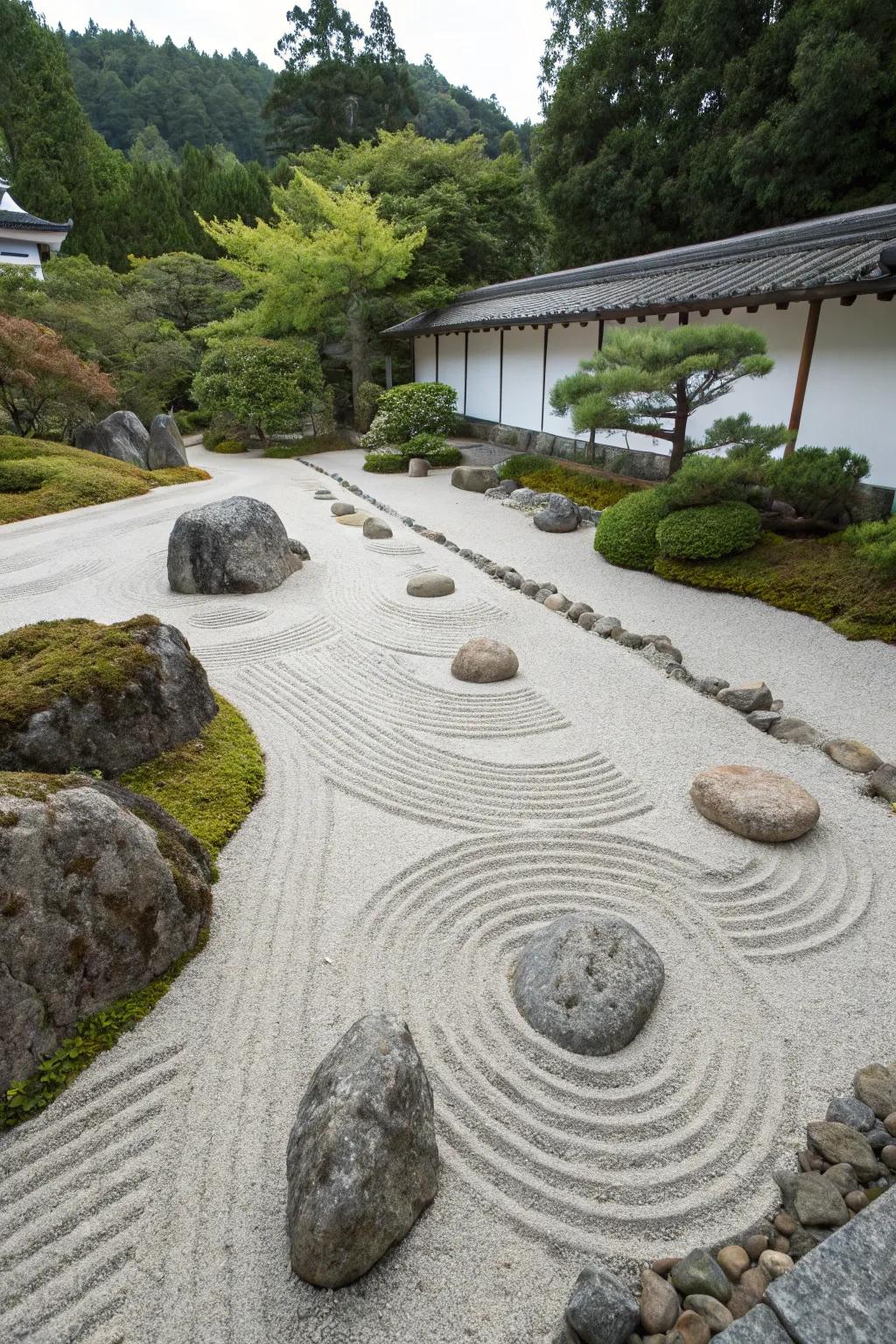
A Zen rock garden provides space for reflection and contemplation. I love how the simplicity of rocks and sand offers a meditative experience.
These products might help:
- Zen Garden Sand: Enhance tranquility in your garden with premium sand perfect for raking meditation patterns.
- Assorted Zen Garden Rocks: Create a serene atmosphere with these carefully selected rocks for your Zen garden.
- Wooden Zen Garden Rake: Design beautiful sand patterns with this traditional wooden rake, perfect for meditation.
9. Create a Balance of Colors
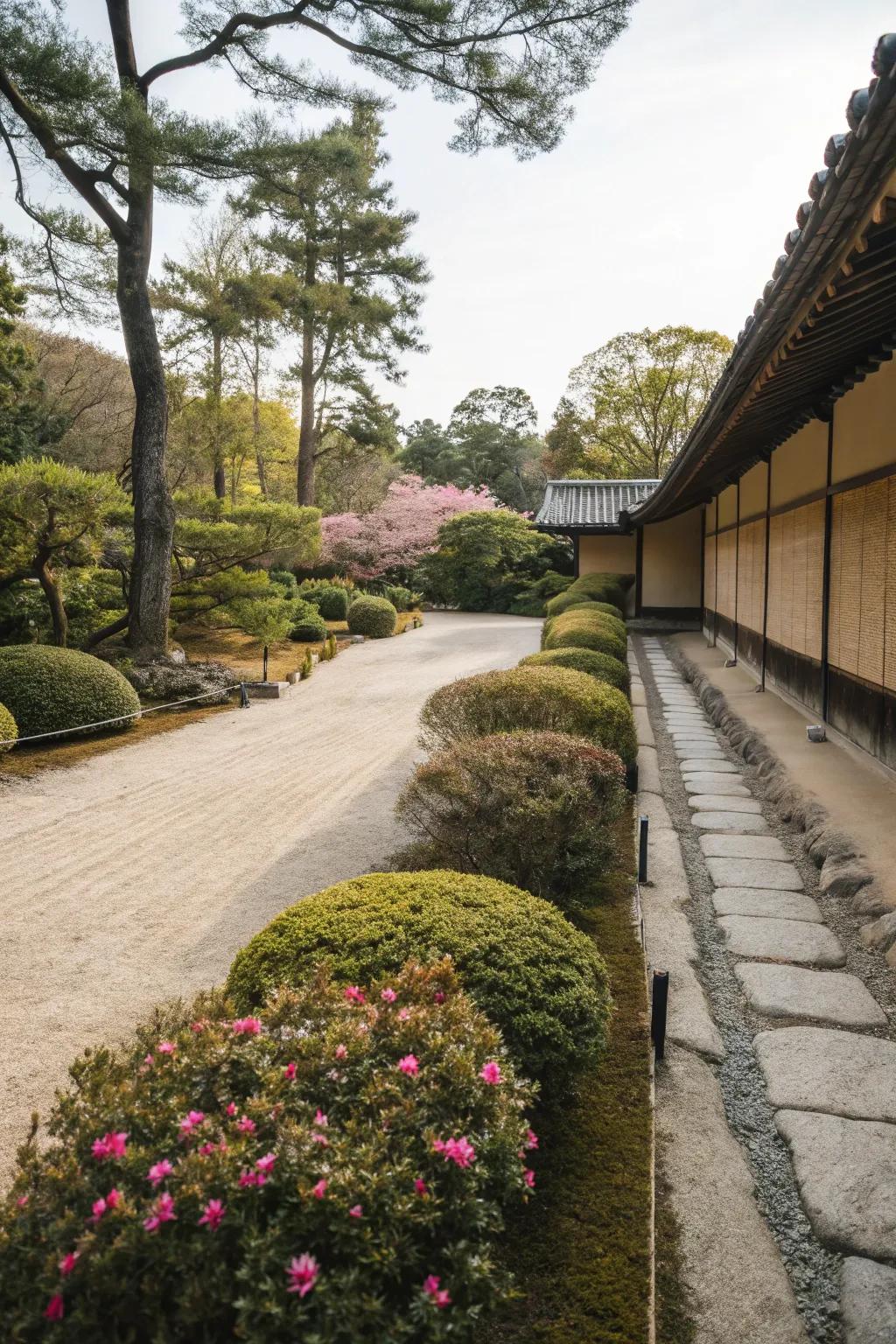
Focus on neutral and earthy tones with occasional bright plant accents. This balance creates a calm yet visually intriguing environment.
A few suggestions:
- Natural Stone Pathway Pavers: Elevate your garden paths with earthy stone pavers, offering a natural and serene look.
- Ornamental Grass Seeds: Add texture with low-maintenance ornamental grasses, perfect for enhancing your minimalist garden design.
- Neutral Outdoor Rug: Place a neutral-toned outdoor rug for a cozy touch to your garden seating area.
10. Utilize Low-Growing Plants
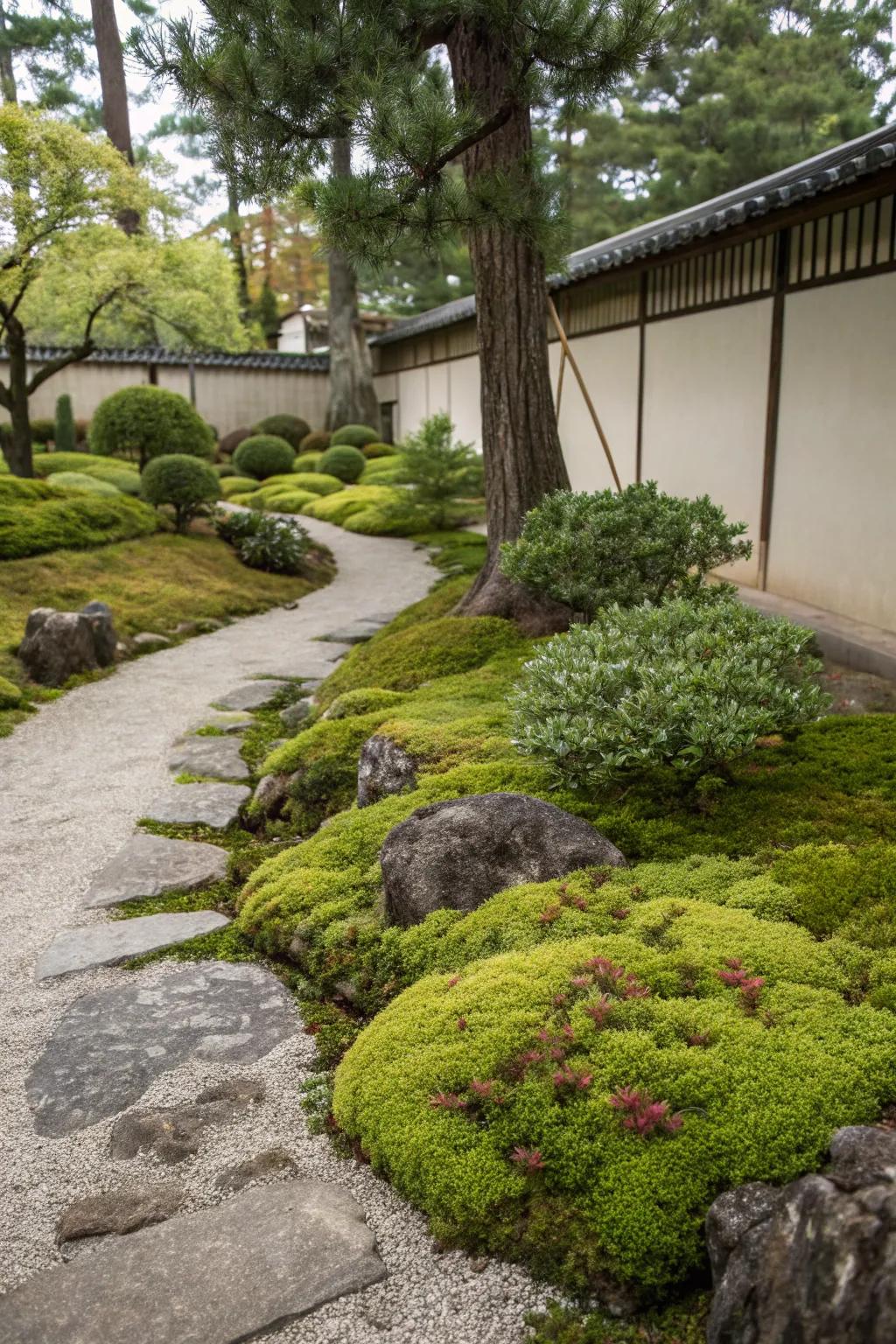
Low-growing plants like moss and sedums maintain a minimalist feel. I find they add texture and interest close to the ground.
You might give these a try:
- Moss Starter Kit: Enhance your garden’s texture with a moss starter kit. Perfect for that minimalist touch.
- Sedum Ground Cover Mix: Add variety and interest with a hardy sedum mix. Ideal for low-maintenance garden beauty.
- Miniature Garden Pebble Set: Create pathways and accent spaces with a pebble set. Complements low-growing plant displays.
11. Add Traditional Japanese Accents
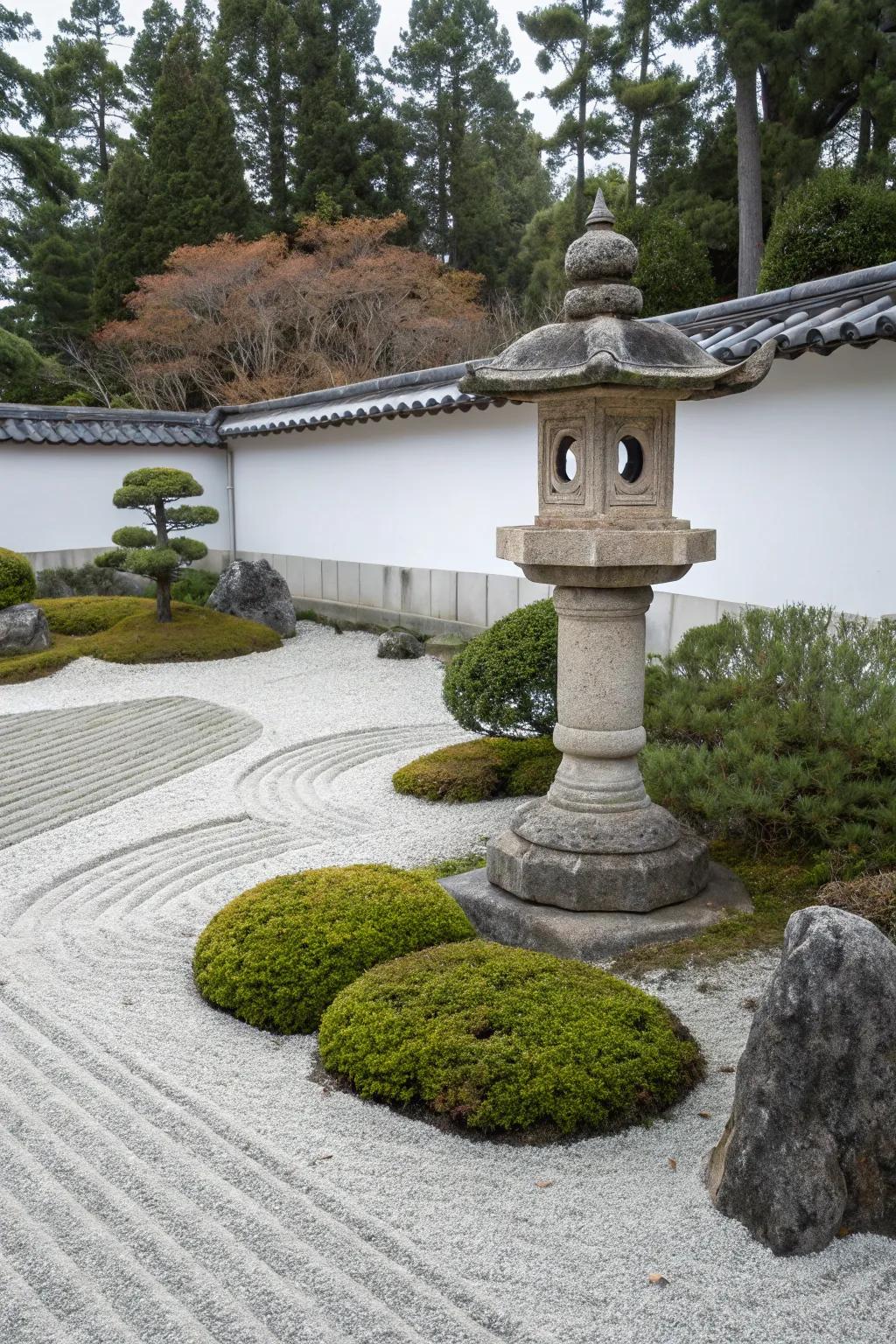
Introduce traditional accents like stone lanterns or sculptures for cultural depth. These elements can transform a garden into a space that feels timeless.
Some ideas to consider:
- Stone Lantern Sculpture: Enhance your garden’s ambiance with an elegant stone lantern, adding tranquility and timeless charm.
- Zen Garden Sand Rake Set: Maintain your minimalist garden design with a sand rake set for meditative patterns and relaxation.
- Japanese Garden Pagoda Statue: Bring cultural depth to your landscape with a detailed pagoda statue, infusing traditional elegance.
12. Add a Touch of Seasonal Beauty
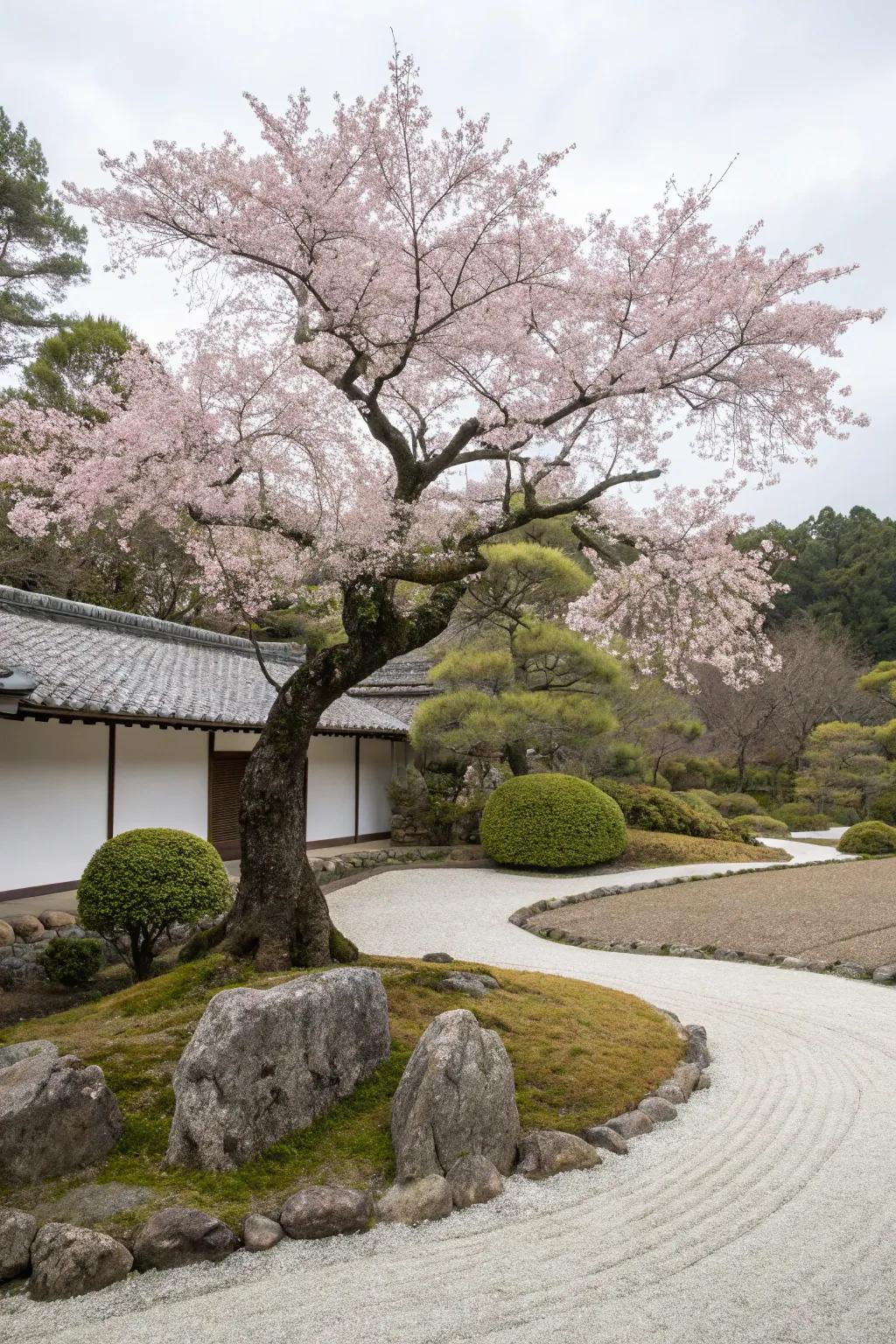
Incorporate trees like cherry blossoms for seasonal interest. Watching the seasonal changes in my garden reminds me of nature’s beauty and cycles.
A few relevant products:
- Artificial Cherry Blossom Tree: Transform your garden with a stunning artificial cherry blossom tree, adding beauty throughout the year.
- Seasonal Garden Lanterns: Enhance the ambiance with seasonal garden lanterns, casting a warm glow on your garden path.
- Outdoor Garden Stone Set: Accentuate your garden’s aesthetic with an authentic outdoor garden stone set, perfect for minimalist designs.
13. Add a Reflective Water Feature
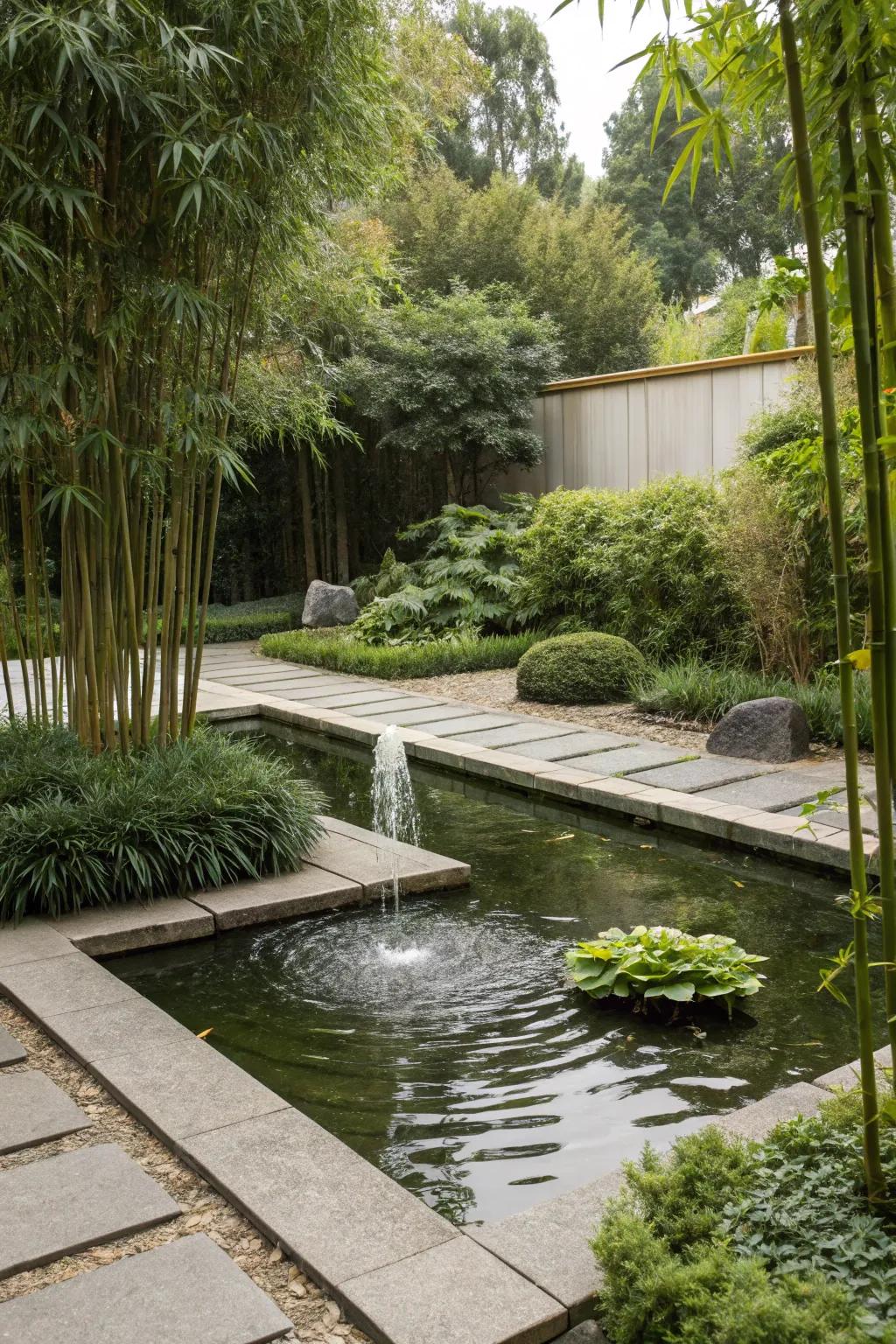
A small pond or fountain creates a focal point and adds a soothing sound to your garden. In my own garden, the gentle trickle of water is a constant invitation to pause and reflect.
These products might be useful:
- Outdoor Garden Fountain: Elevate your garden’s ambiance with this elegant, soothing water fountain. Transform your space today.
- Reflective Pond Kit: Create a serene focal point in your garden with this easy-to-install reflective pond kit.
- Solar Water Pump: Enhance your water feature with an eco-friendly solar pump. Enjoy tranquility without the hassle.
14. Introduce Stepping Stones for Movement
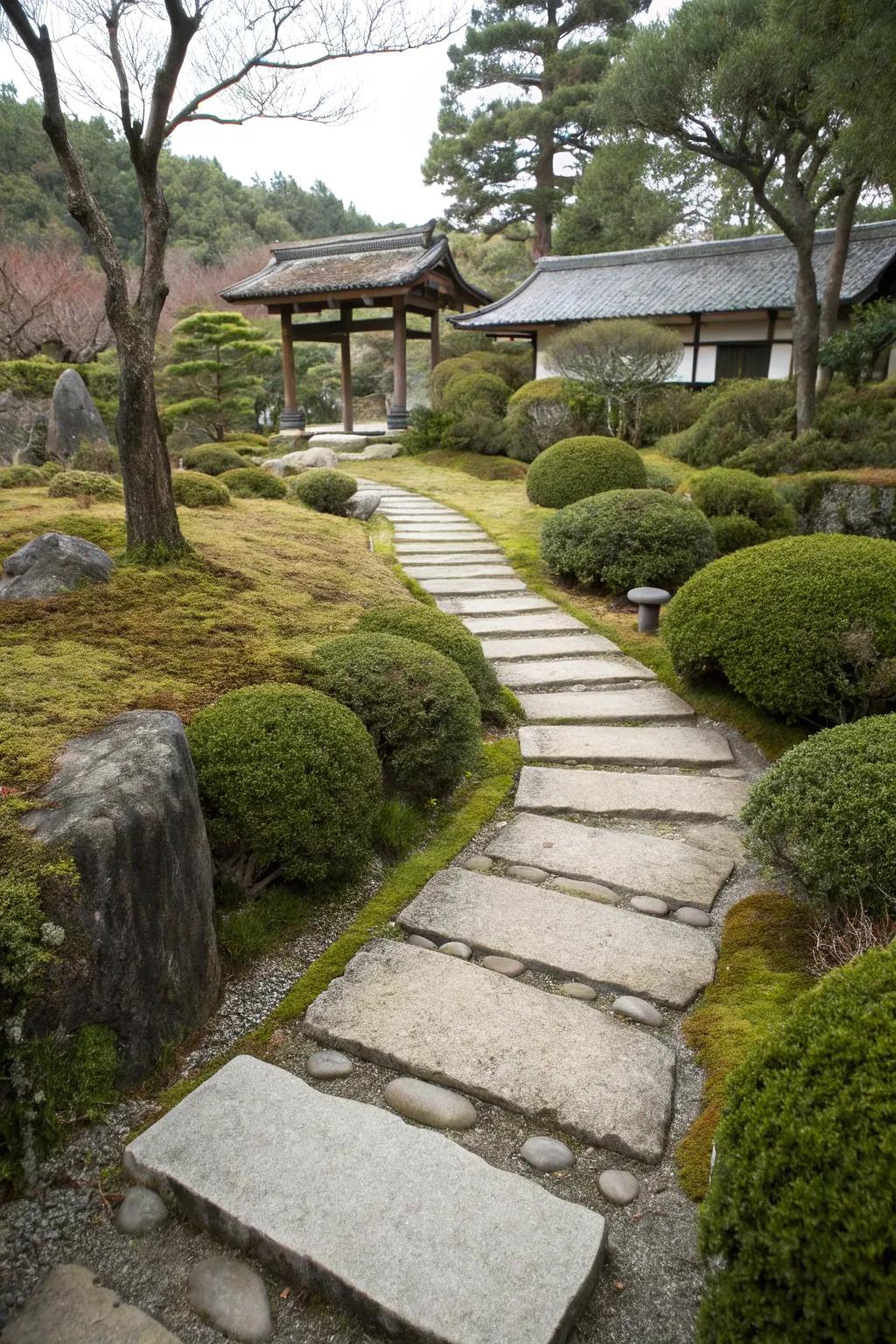
Stepping stones guide visitors and add an element of surprise to the garden path. They encourage a mindful journey through the space.
Check if these fit your needs:
- Natural Slate Stepping Stones: Enhance your garden path with durable and elegant natural slate stepping stones. Perfect for any landscape.
- Concrete Garden Stepping Stones: Create a stable, charming path with weather-resistant concrete stepping stones in your garden setting.
- Round Granite Stepping Stones: Add character and functionality to your garden path with these robust round granite stepping stones.
15. Incorporate Natural Stone Pathways
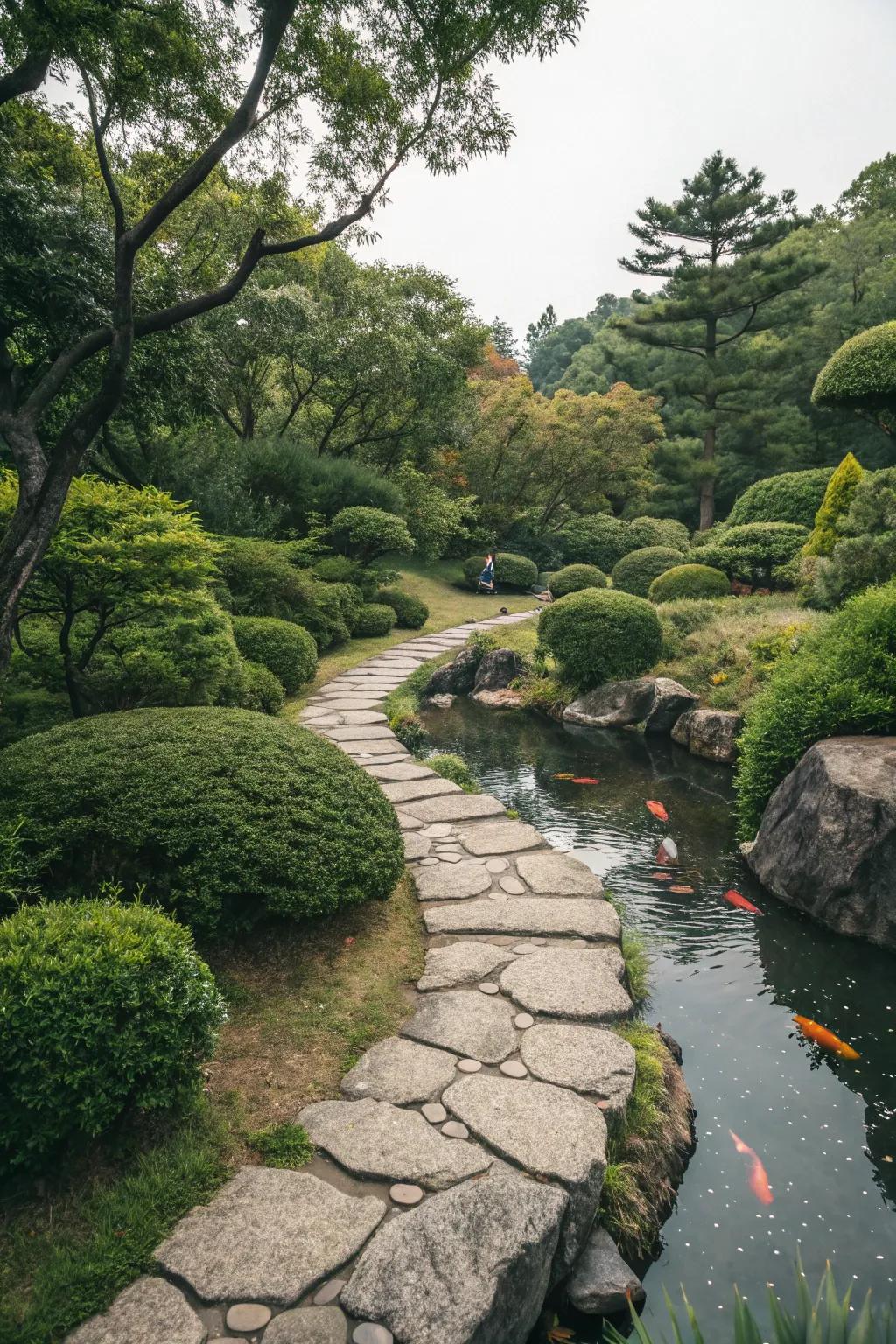
Lay down natural stone pathways to guide the eye and the visitor through your garden. I’ve found that using local stones adds authenticity and reduces environmental impact.
Possibly handy products:
- Natural Garden Stepping Stones: Transform your garden with these authentic natural stones, adding elegance and guiding paths effortlessly.
- Japanese Garden Pathway Stones: Enhance your Japanese garden charm with these elegant pathway stones, creating a serene landscape.
- Local Natural Stone Slabs: Create authenticity by integrating local stone slabs into your minimalist garden design seamlessly.
16. Use Moss for a Soft Touch
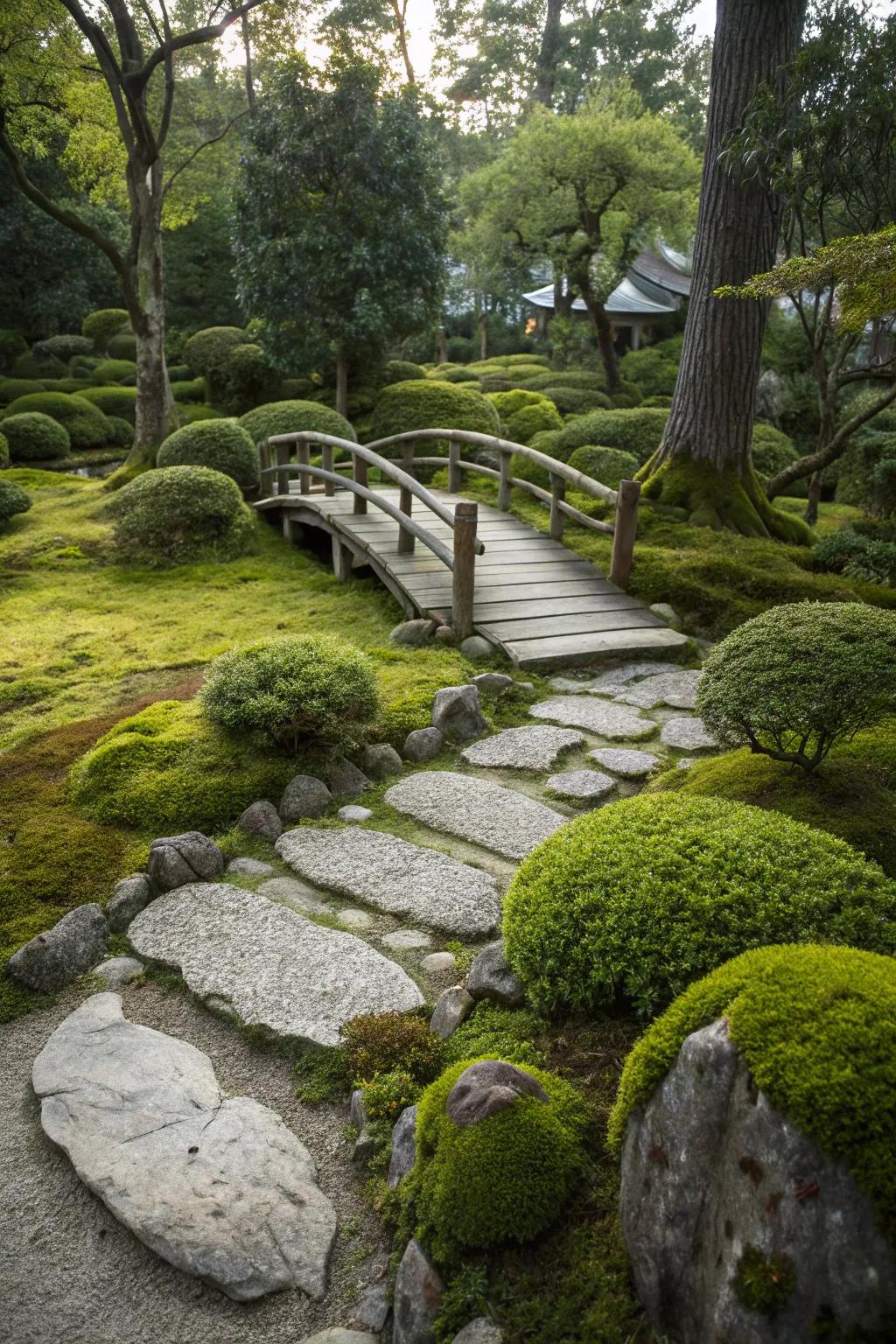
Incorporate moss in shaded areas for a lush, green carpet that thrives in moist conditions. It’s a beautiful way to soften the hard edges of stones and pathways.
A few things you might like:
- Moss Starter Kit for Gardens: Easily cultivate lush moss carpets to enhance shaded areas in your garden. Perfect for beginners.
- Shade-Tolerant Moss Seeds: Transform shaded spaces with these easy-to-grow moss seeds. Perfect for lush, green coverage.
- Moisture-Retaining Garden Soil: Optimize moss growth with this special soil, maintaining ideal moisture levels for thriving plants.
17. Integrate Wooden Elements
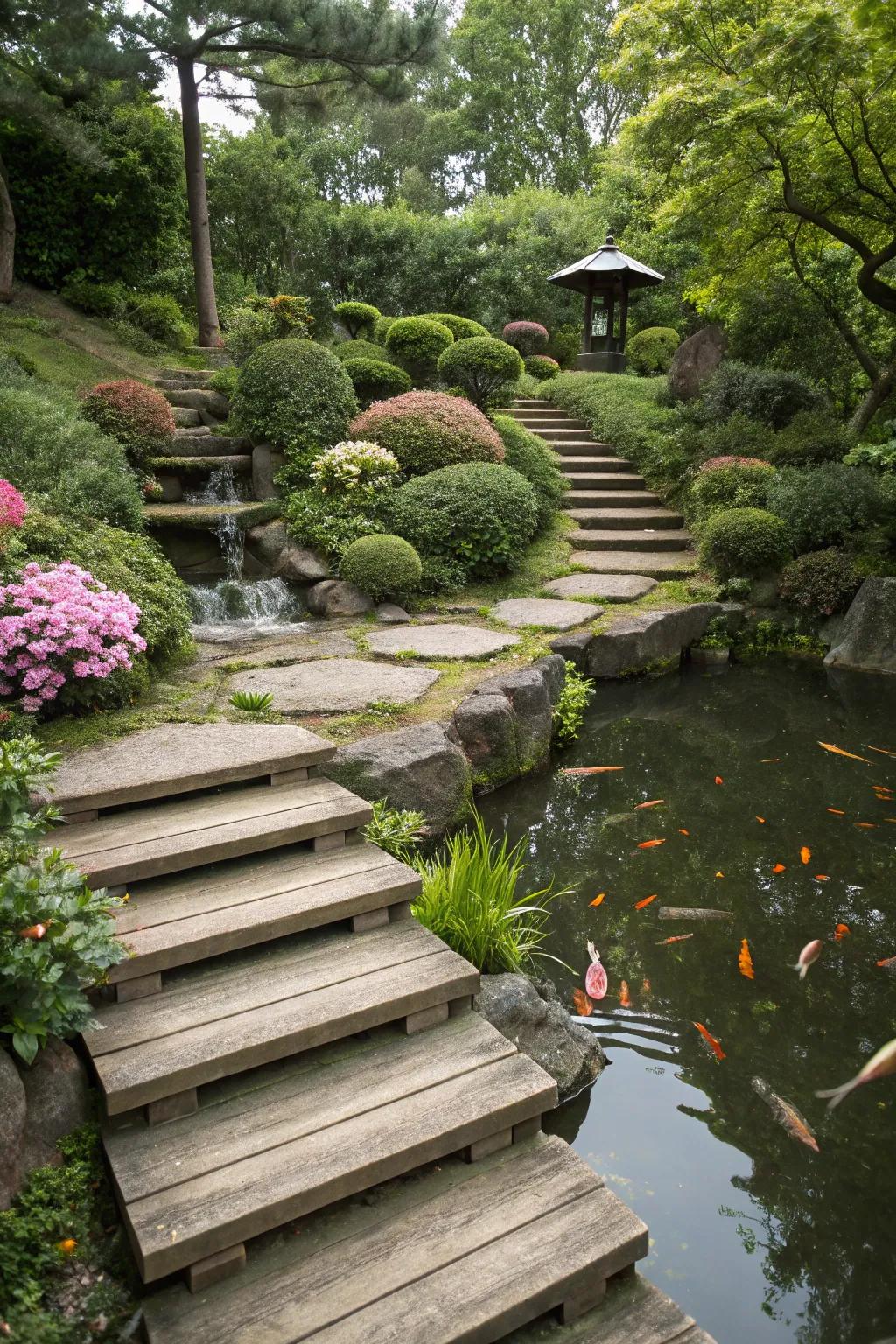
Wooden decks or steps seamlessly blend with the garden’s natural elements. I used sustainably sourced wood to ensure my garden stays eco-friendly.
Check these products out:
- Eco-friendly Wooden Decking Tiles: Enhance your garden with these sustainable decking tiles for a natural and refined look.
- Sustainably Sourced Wooden Garden Steps: Elevate garden elegance with these durable wooden steps, perfectly blending with natural settings.
- Weather-resistant Wooden Patio Furniture: Complete your garden with stylish, weather-resistant furniture that complements wooden elements beautifully.
